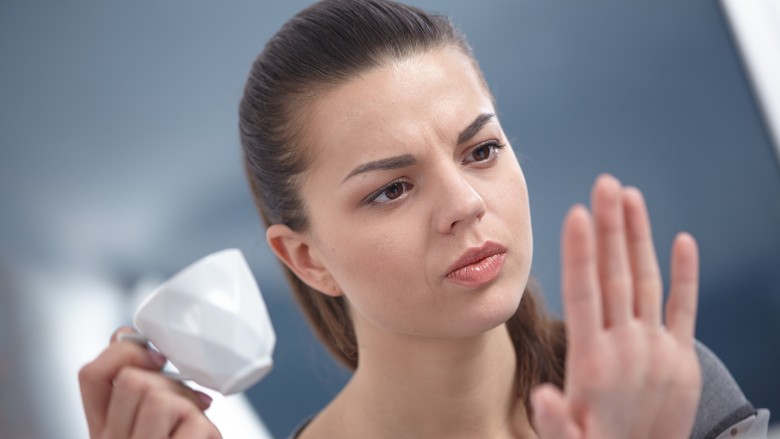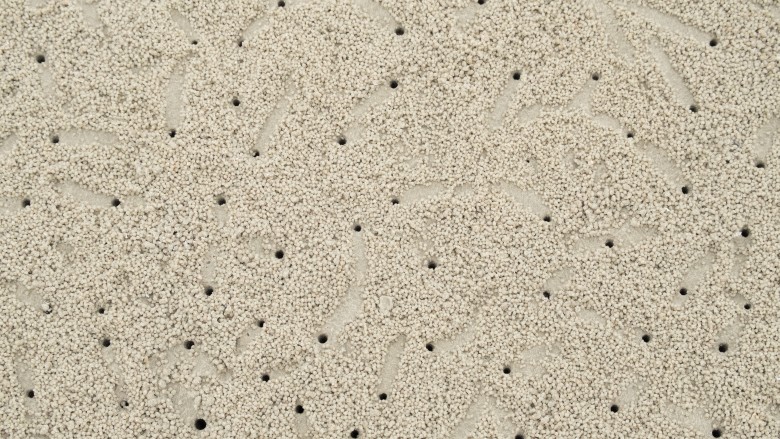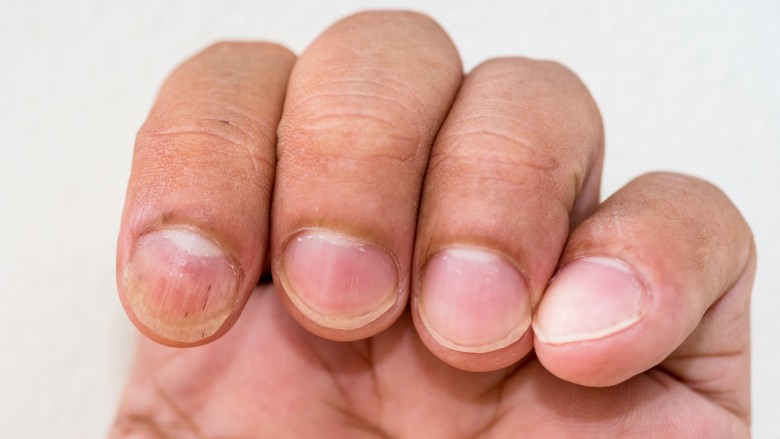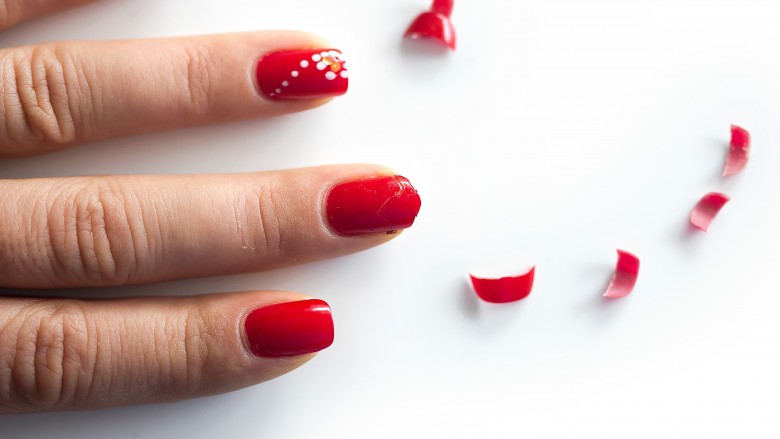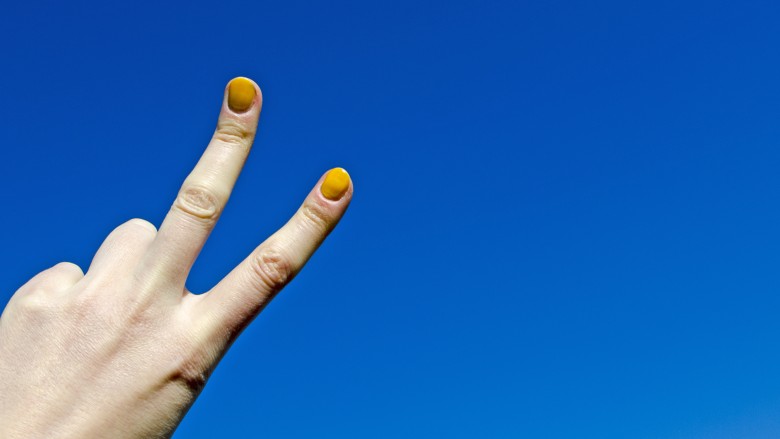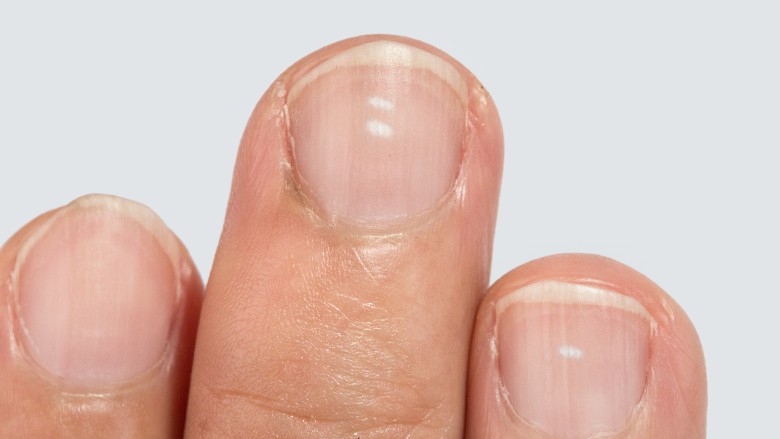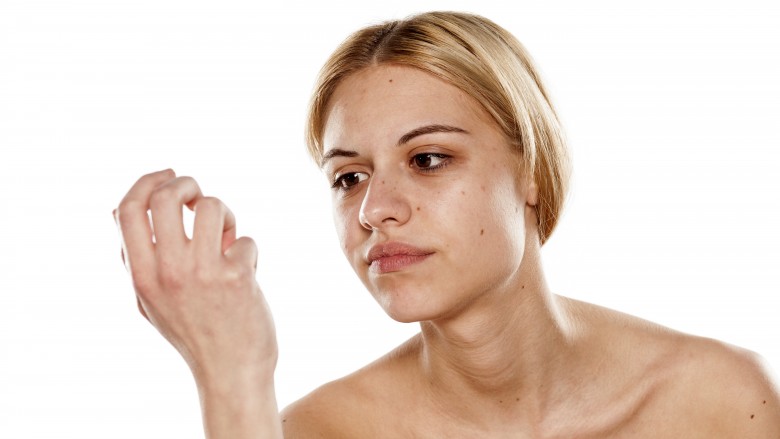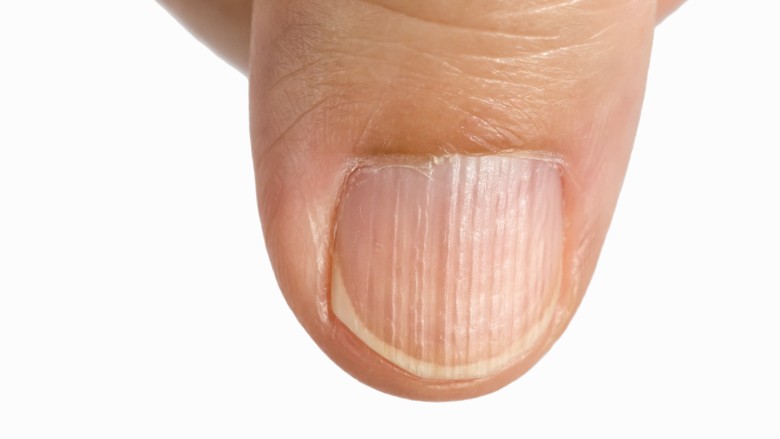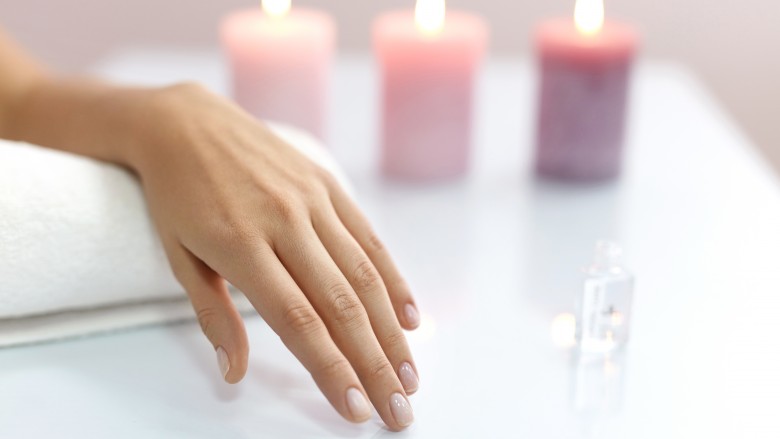What Your Nails Reveal About Your Health
We may receive a commission on purchases made from links.
There's something about a fresh manicure that can bump your self-confidence up a notch. Whether you're rocking a ruby red or mysterious dark blue, nails that look good, make you feel good. And while staying on top of your nails for beauty's sake is perfectly acceptable, it turns out that paying attention to what's under the polish can give you some important clues as to what's going on inside your body.
"Nail health is reflective of body health," Dr. Fares Diarbakerli, a board certified OBGYN with a practice in Clifton, NJ, told me in an email. "The appearance of the nails can signal a health concern that needs to be addressed. It's amazing how the human body gives us these signs." So before heading off to the nail salon for your next mani/pedi, take a second look at your hands and feet to see what they might be telling you about your overall health. Here are 10 nail symptoms you don't want to ignore.
Splitting
Our nails have several strong layers that if weakened, can peel from each other. This is known as Onychoschizia or splitting, which according to Dr. Tsippora Shainhouse, a Beverly Hills board-certified dermatologist, can be caused by dehydration of the nail plate.
"This can be associated with frequent hand washing, cold/dry weather, drying nail polishes, acrylic nail glues and acetone polish removers," she explained. "Management includes wearing dishwashing gloves to do dishes, avoiding gels and acrylic nails, using strong moisturizers and wearing a nail-hardener."
Pitted nails
If you've ever noticed that your nails look like someone took a pin and made tiny holes in the surface, Dr. Shainhouse says it could be a sign of various conditions, including psoriasis/psoriatic arthritis. According to the Psoriatic Arthropathy Alliance (PAA), nail psoriasis affects about 50 percent of people with other forms of this autoimmune disorder.
Other signs of nail psoriasis include thickening, as well as changes in shape or color. They may also feel tender and painful. If you note any of these symptoms, Dr. Shainhouse says, "See your dermatologist for a full-body skin exam." Nail psoriasis can often be treated with the use of a topical steroid.
Nail clubbing
Nail clubbing, also known as digital clubbing, is a deformity in the finger and toe nails where your nails become concave (dome-shaped) and the fingertips look rounded. Clubbing usually happens gradually enough that many people don't even notice it, but Dr. Shainhouse explains that it can be a sign of certain lung disease like emphysema. "If you weren't born with rounded nails, see your doctor for a full check-up and possibly a chest x-ray," she advises.
Brittle nails
Typing away at the computer day after day can result in the occasional nail casualty. But Dr. Shainhouse notes that if your nails often crack/break easily, it's likely a sign of dehydration of the nail plate. To avoid this, go easy on the alcohol-based hand sanitizers, super-drying nail polishes and acetone-based polish removers.
If the problem persists, Dr. Diarbakerli notes that this could be a sign of a bigger health concern. "Cracked, brittle nails are a sign of a vitamin deficiency usually folic acids or the B's," he said. "It can also signal some thyroid issues like hypothyroidism." He recommends asking your physician for a blood test to be sure.
Yellow nails
If you're like me, your bare nails don't often see the light of day. From Essie's "Ballet Slippers" to OPI's "Lincoln Park After Dark," I never met a nail color I didn't like. Unfortunately, constantly having your nails painted can result in them turning a not-so-cute yellow color. According to an article published in Self, this can happen as a result of a chemical reaction between the nail polish and the keratin protein in your nails, making them brittle and yellow.
Most of the time, yellow nails aren't anything a little lemon juice can't fix, but on rarer occasions, it could be something more serious. "Yellow nails can be a sign of a yeast or fungal infection," said Dr. Diarbakerli, who noted this might require antibiotics.
Yellow nails can also indicate diabetes, Dr. Debra Jaliman, a board-certified NYC dermatologist and author of Skin Rules: Trade Secrets From A Top New York Dermatologist, told me in an interview. If this is the case, it will need to be treated with either prescription pills or insulin.
White spots
If you've ever injured your nail, you may have noticed white spots forming. This, according to Dr. Jaliman, is a common condition called Leukonychia and will typically grow out as the nail grows. "If the entire nail is white, which is called called leukonychia totalis, then it may be a sign of low albubim and kidney failure," she explains. "A side effect of antibiotics can also cause this problem."
The verdict: make an appointment with your doctor if your nails seem visibly whiter than normal.
Terry's nails
According to England's National Health Service, Terry's nails are typically white with reddened or dark tips, which is a sign of decreased blood supply to the nail bed. "Terry's nails are a sign of liver disease, congestive heart failure, kidney failure or diabetes," explained Dr. Jaliman. Other causes of Terry's nail include deficiency anemia or an overactive thyroid.
Vertical lines
While they can look unsightly, ridges that run down the length of your nails are not dangerous, explains Dr. Shainhouse. "They are actually a normal sign of aging, like wrinkles in the nail bed." And just like you can manage the appearance of wrinkles on your face, there are plenty of things you can do to help keep your nails looking young.
"To reduce external sources of skin aging, keep hands and nails moisturized and don't smoke," Dr. Shainhouse advices. "Keep hands warm to maintain good circulation and reduce UV-exposure by wearing sunscreen every day."
Beautiful nails are healthy nails
Now that we know what different nail symptoms can mean for our overall health, I asked Dr. Shainhouse to share what our ideal nails should look like.
"Healthy nails have their own natural shine," she said. "Overuse of products can dry the nails and even peel off the top layer of nail (think: gel mani removal and acrylic nail changes). Even buffing the nails can be harmful, if you remove too many layers, as this thins the nails, leaving them more susceptible to breakage and splitting and leaving the underlying nail bed with reduced protection and at risk for permanent damage due to trauma."
She also dished out some tips on how to avoid common nail infections, saying, "It's easy to pick up skin and nail infections from the nail salon, pool deck and gym change-room floor and showers. To avoid this, wear shoes at all times at the gym (flip flops for the shower), keep your own toenails short/trimmed, and treat any Athlete's foot when you first notice it. It's easy enough to manage fungus on the skin, but it is extremely difficult to eradicate it from the toenails." She added, "At the nail salon, it is best to bring you own tools. If you use theirs, make sure that the manicurist opens a new sterilized pack in front of you. Also, don't rest your hands and feet in re-used or recycled water baths."

